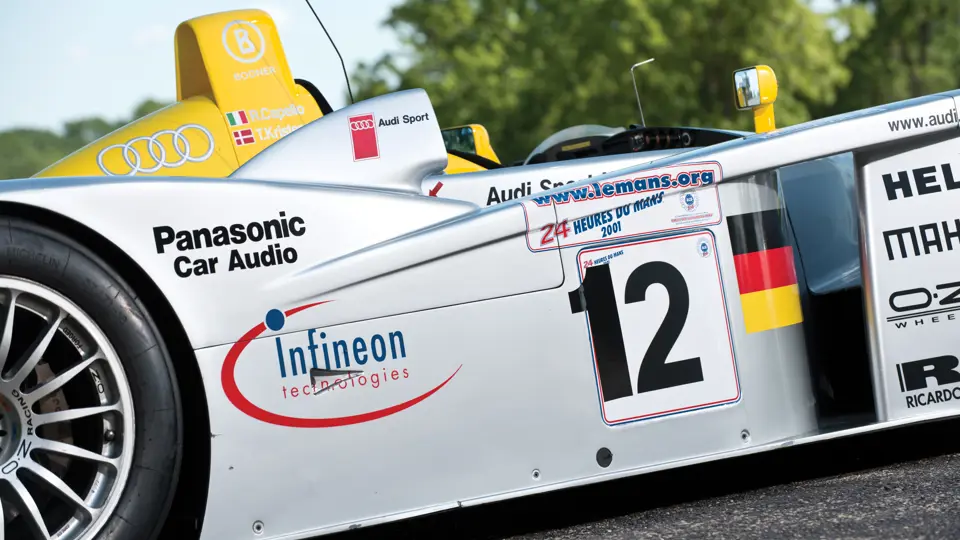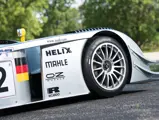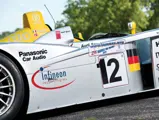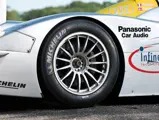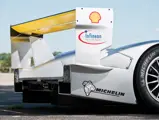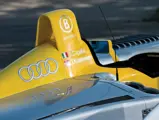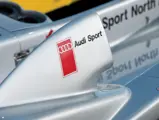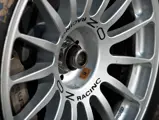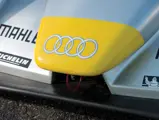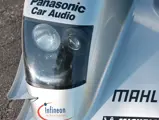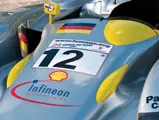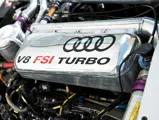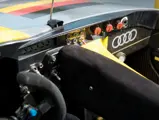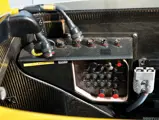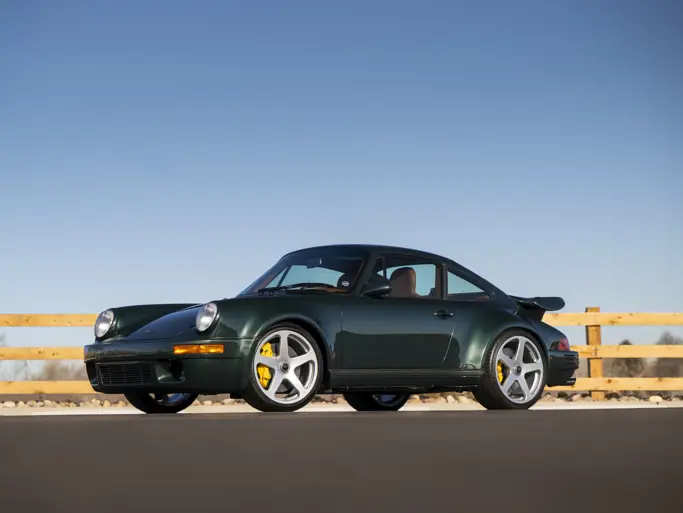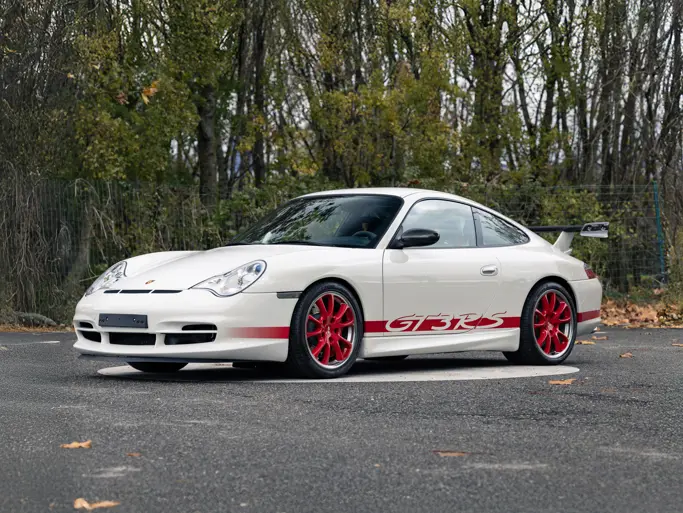610 hp, 3.6-liter twin-turbocharged V-8 engine, direct electronic fuel injection, Ricardo six-speed sequential dual-clutch manual gearbox, independent suspension with double wishbones pushrod system with horizontal dampers, and four-wheel hydraulic disc brakes. Wheelbase: 104.3"
Please note that this vehicle will be sold on a Bill of Sale only.
• One of 16 Audi R8 Sports Prototypes to be built; one of five in private hands
• Race-winning car at Jarama in 2001; finished Seventh Place at the 2002 24 Hours of Le Mans
• Last raced at Road America in 2007
In the six-year competition history of the R8 spyder, from 2000–2006, it compiled an enviable record, losing only 16 races in that time period. The R8 won the 24 Hours of Le Mans five times, in 2000, 2001, 2002, 2004, and 2005. It won the American Le Mans Series seven times, from 2001–2006, the European Le Mans Series in 2001, and it was the Le Mans Series champion in 2004. The one year it did not win Le Mans, in 2003, an Audi was resting on its laurels after a hat-trick and the R8’s sibling Bentley Speed 8 finished 1-2. Even as it was being replaced in the American Le Mans Series by the turbocharged diesel R10 in 2006, Allan McNish and Rinaldo Capello sent the R8 out with style, winning the R8’s very last race on July 1, at Lime Rock, Connecticut.
As early as 1997, Audi Team Joest sports director Wolfgang Ullrich was considering competing at the 24 Hours of Le Mans, which had already attracted BMW, Nissan, Mercedes-Benz, Porsche, and Toyota. In 1998, Audi contracted with Dallara to build a carbon-fiber roadster, the R8R for 1999, and also hired Tony Southgate’s Racing Technology Norfolk, or RTN, in England to build a coupe: the R8C.
The Audi R8Rs weren’t fast enough to win Le Mans in 1999, but they finished a creditable Third and Fourth behind a BMW V-12 and Toyota GT One. The R8C coupes suffered gearbox problems, and the design was shelved, although it would return later as the Bentley Exp Speed 8. Ullrich ordered a new R8 roadster from Dallara for 2000, and the stage was set for a dynasty.
The Audi R8R started 2000 by winning at Sebring, bettering its Third Place the year before, and then swept the 24 Hours of Le Mans with a one-two-three finish. Frank Biela, Tom Kristensen, and Emanuele Pirro took the checkered flag, followed across the line by Laurent Aiello, Allan McNish, and Stephane Ortelli, and Michele Alboireto, Christian Abt, and Rinaldo Capello.
One of the elements that would lead to the Audi R8’s practical stranglehold on the various Le Mans series was its ease of maintenance. Significant parts could be changed very quickly, the classic example being the entire rear end, usually a three-hour job, which was once switched in three and a half minutes in qualifying for Le Mans. The secret was that an entire sub-frame dropped down separately and a new unit could be bolted in place, including suspension, six-speed gearbox, and transaxle. The suspension would already have all its adjustments pre-set. The Le Mans series organizers negated this considerable advantage in 2003 by requiring all cars to finish the race with the same gearbox casing with which they started.
Returning to Le Mans in 2001, Audi again finished 1-2, surviving the disastrous fourth lap downpour that led to nine cars crashing on the rain-slick surface. Once again, Frank Biela, Tom Kristensen, and Emanuele Pirro won, followed by Laurent Aiello, Rinaldo Capello, and Christian Pescatori. The big surprise was the Third Place of the Bentley Exp Speed 8, developed from the unsuccessful Audi R8C coupe of 1999. It was driven by Andy Wallace, Butch Leitzinger, and Eric van de Poele and won the GTP class.
The third race in the 2001 European Le Mans series (fourth in ALMS) took place at Jarama, Spain on May 20, and was won by the R8 of Tom Kristensen and Rinaldo Capello, followed by Frank Biela and Emanuele Pirro. The privateer R8 of Stefan Johansson and Guy Smith was Fourth. The Kristensen/Capello Joest Team car is the R8 on offer today.
In 2002, The Audi Joest team returned to Le Mans with several new drivers, but despite the 17 flat tires during the night between the three R8s, the result was the same. In fact, there was a new record. The R8s went one-two-three again, and the winners were Frank Biela, Tom Kristensen, and Emanuele Pirro, the first time that the same drivers had won three straight 24 Hours of Le Mans. Rinaldo Capello, Johnny Herbert, and Christian Pescatori were Second and Michael Krumm Philipp Peter and Marco Werner placed Third. The Bentley Exp Speed 8 returned to take
Fourth Place and won the GTP class, driven by Andy Wallace, Butch Leitzinger, and Eric van der Poele. Further down the field, in Seventh Place, was the R8 of privateer Team Goh, from Japan, and driven by Seiji Ara, Yannick Dalmas, and Hiroki Kato. It placed Sixth in the LMP class and is the same car that won at Jarama in 2001, and it is for sale today.
Having pulled off a very special kind of hat trick, Audi Factory Team Joest decided to sit out the 2003 Le Mans 24 Hours, but instead, sent a pair of redesigned Bentley Speed 8s, #7, driven by Guy Smith, Tom Kristensen, and Rinaldo Capello and #8, driven by Johnny Herbert, David Brabham, and Mark Blundell. The Bentleys finished 1-2, which was much acclaimed, as it had been 71 years since the marque’s last appearance at the race. Privateer R8s finished Third and Fourth, and three-time winner Frank Biella would have undoubtedly been a factor in a privateer R8, had he not run out of fuel in the third hour.
The Audi R8s almost finished one-two-three-four in 2004, thwarted by an accident when Allan McNish and JJ Lehto skidded into the tire wall after an oil spill from a Porsche. McNish’s car required quite a bit of repair work, and when it regained the track, it was far back. However, drivers Frank Biela and Pierre Kaffar battled back to Fifth Place, since doctors had sidelined McNish. The Audi Japan/Team Goh R8 won, driven by Seiji Ara, Rinaldo Capello, and Tom Kristensen, while Second Place went to the Audi/UK Veloqx R8 of Jamie Davis, Johnny Herbert, and Guy Smith, and Third Place to Champion Racing’s R8, driven by JJ Lehto, Marco Werner, and Emanuele Pirro.
The year 2005 would see the last appearance of the factory Audi R8s at the 24 Hours of Le Mans; the turbo diesel R10 would replace them in 2006. Once again Champion Racing R8, driven by JJ Lehto, Tom Kristensen, and Marco Werner, took the checkered flag, with two others in Third and Fourth, and the Pescaraolo Judd in Second Place. The win marked the sixth straight for Kristensen and his seventh overall, breaking Jacky Ickx’s record.
Brad Kettler, the longtime crew chief of Champion Racing, explained the R8’s phenomenal success when he said recently that “it won at Le Mans. It won at Lime Rock. And those two tracks couldn’t be more different. The R8 even won on street courses. It really had no rivals in raceability, durability, and serviceability.”
Given its provenance, the next owner of this Audi sports prototype can be sure of drawing a crowd anywhere his R8 appears, and he needn't worry about being competitive either. As Kettler pointed out, “Andre Lotterer was on the pole at Sebring this year, in the Audi R18 TDI, with a 1:45:8. During tire testing in 2005, J.J. Lehto ran a string of low 44s in an R8. So yeah, I think this car, race pace, head to head, could compete today.”





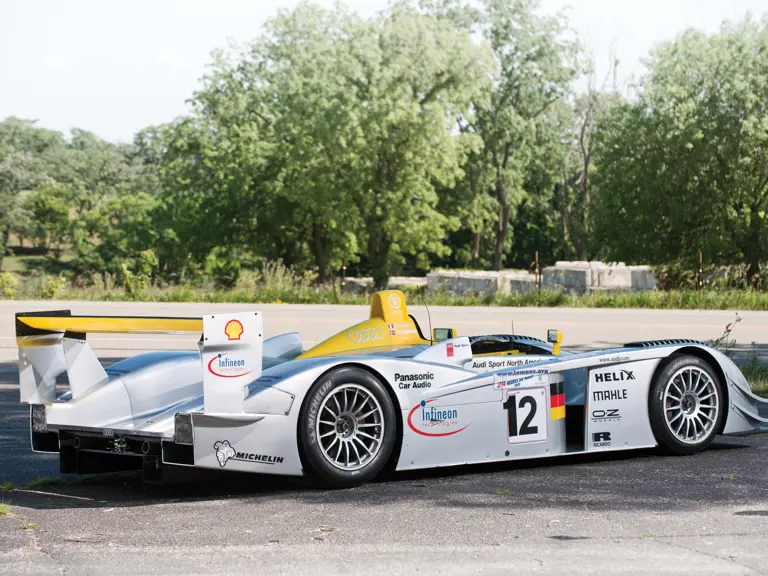

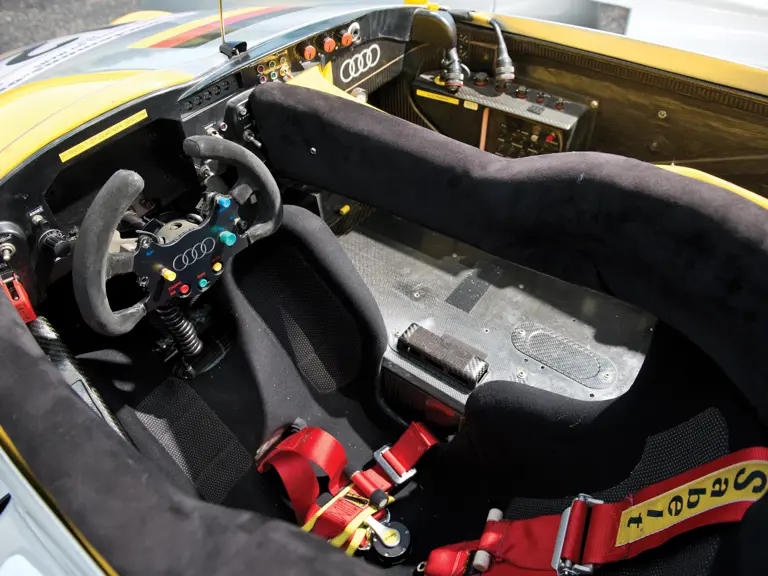
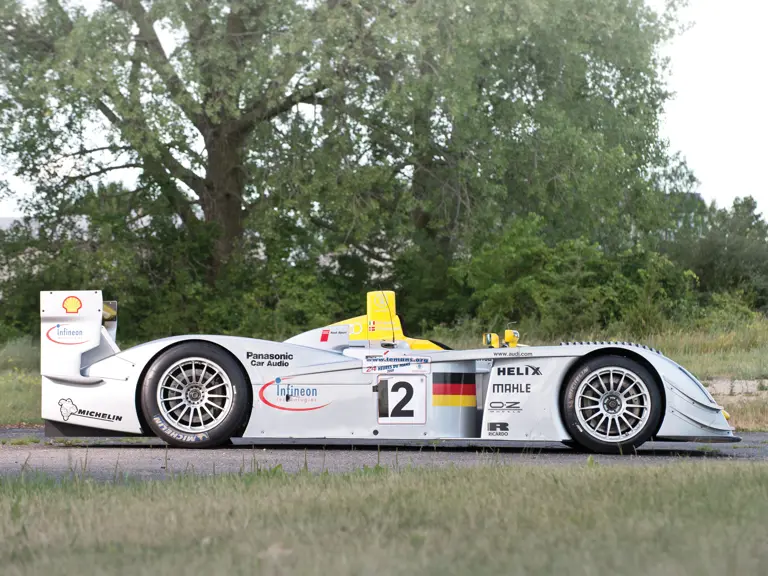
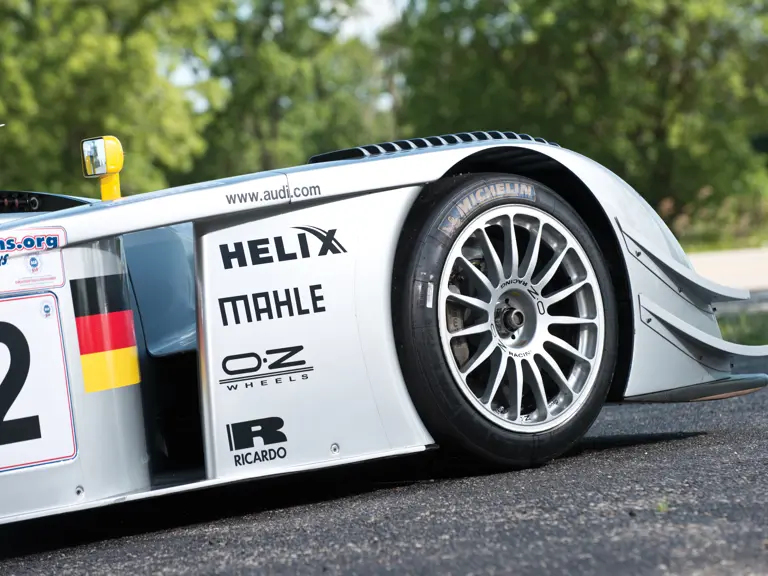

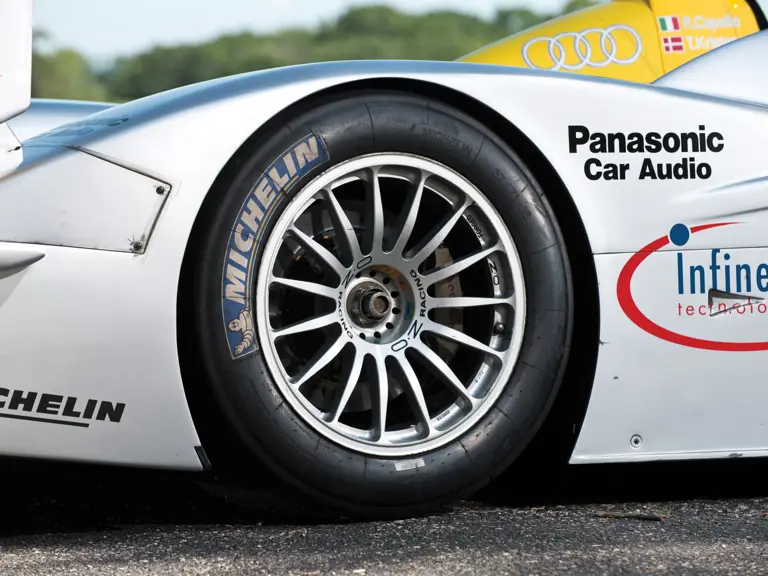
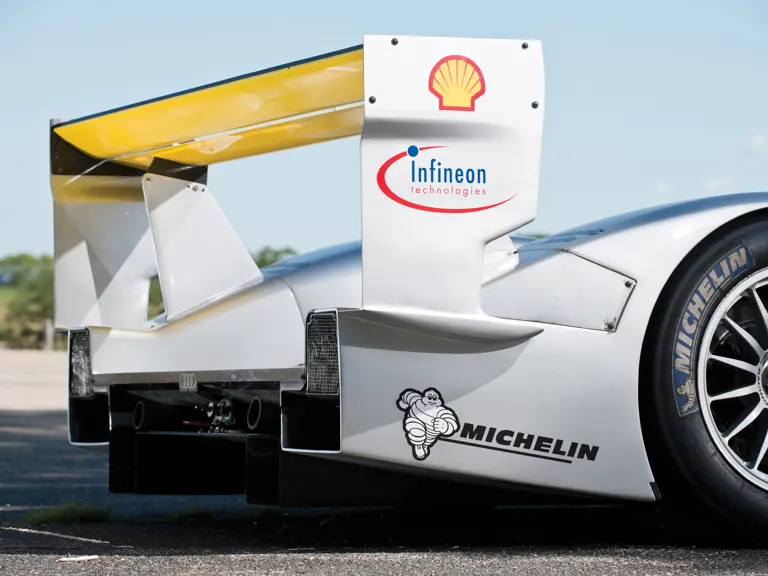
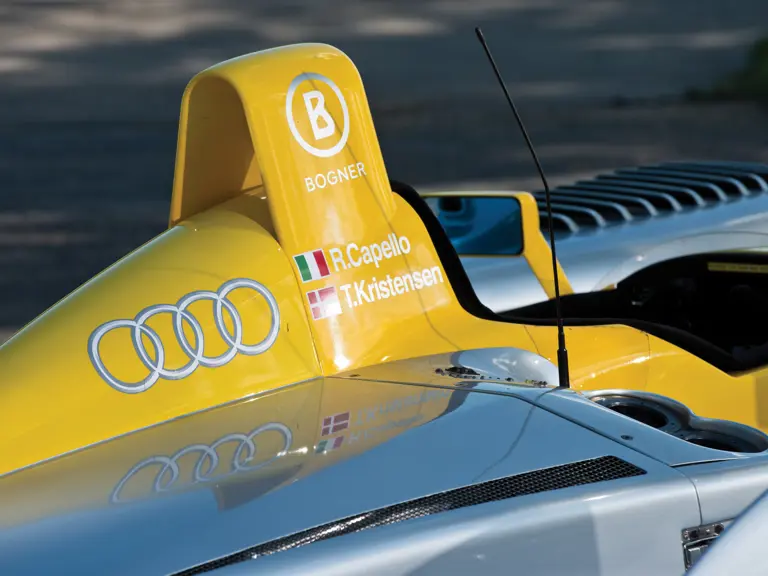
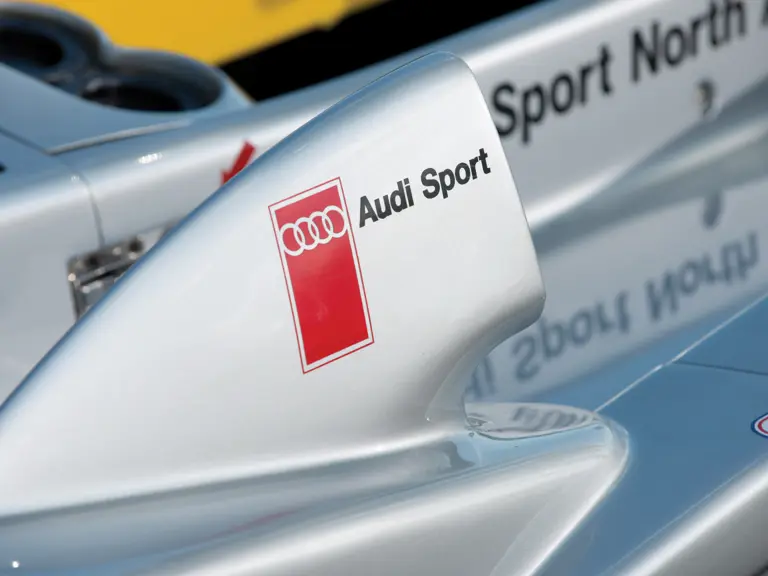
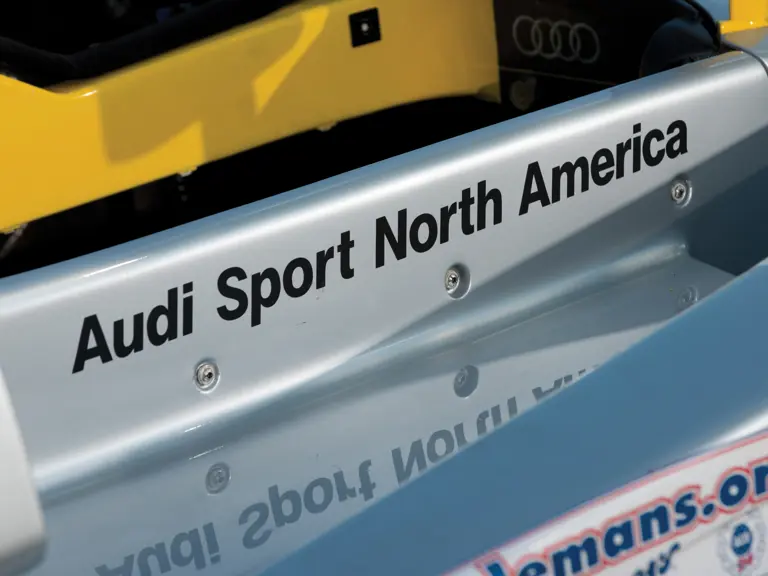

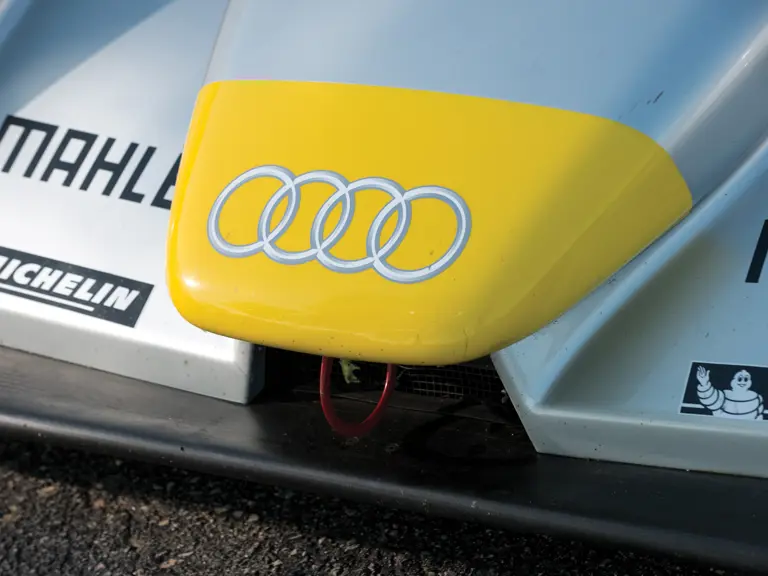
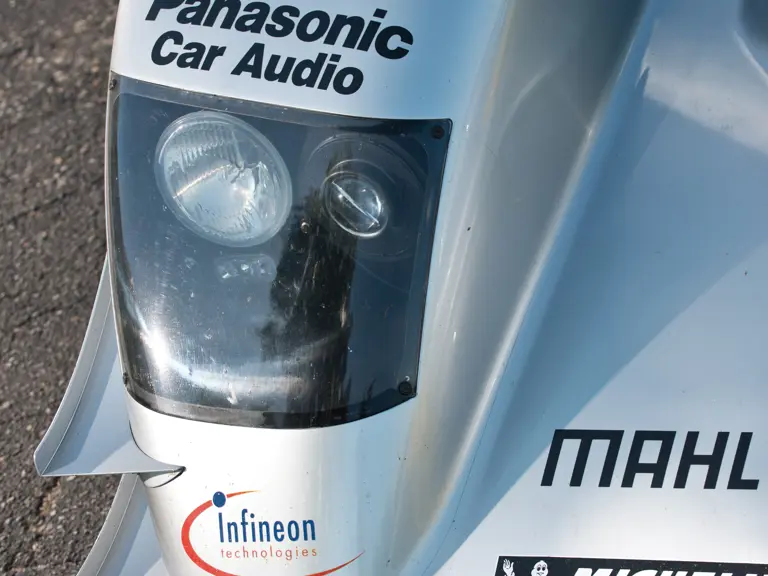
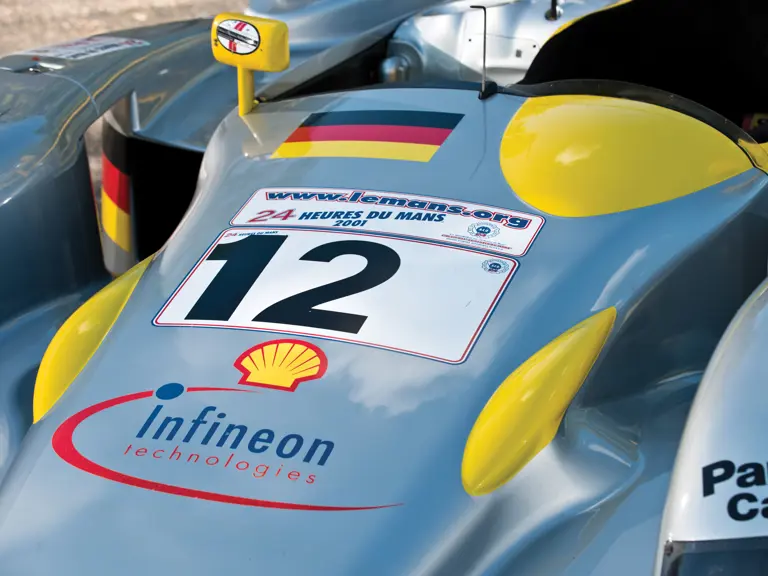

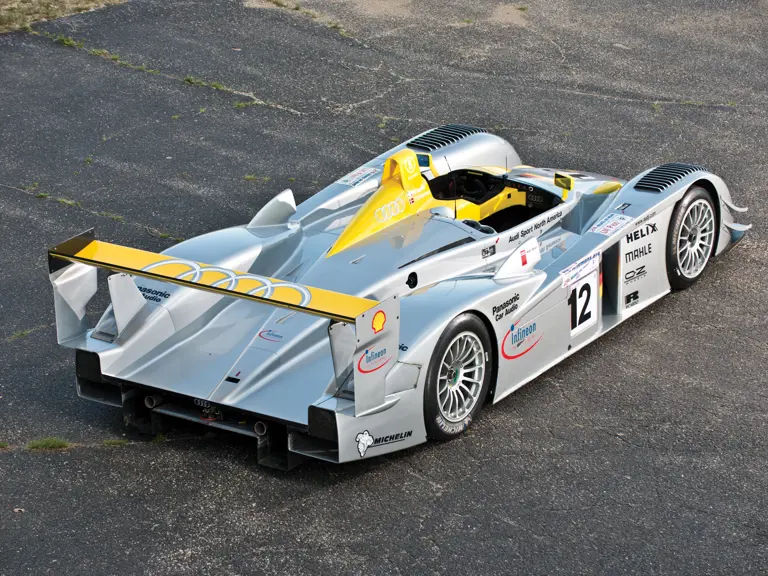
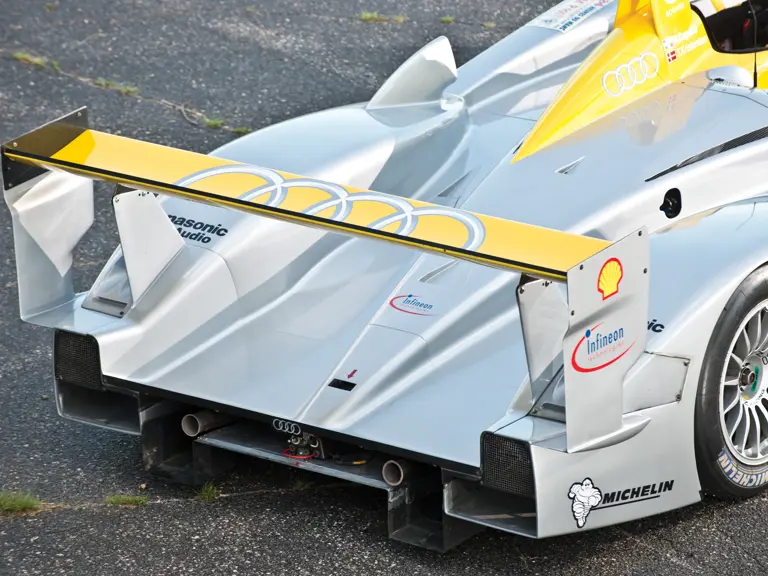
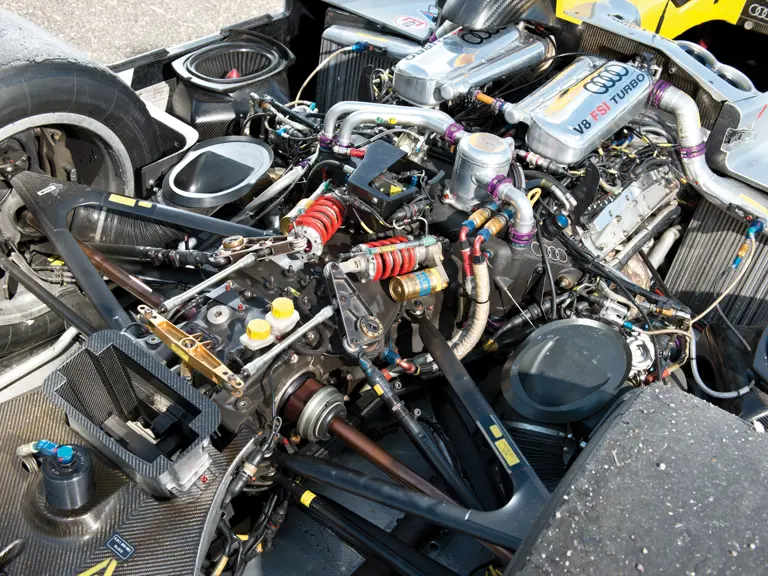
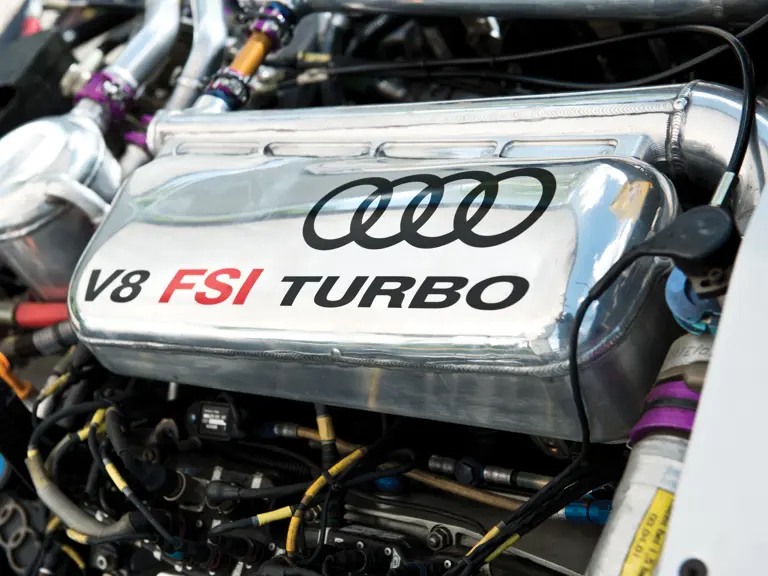

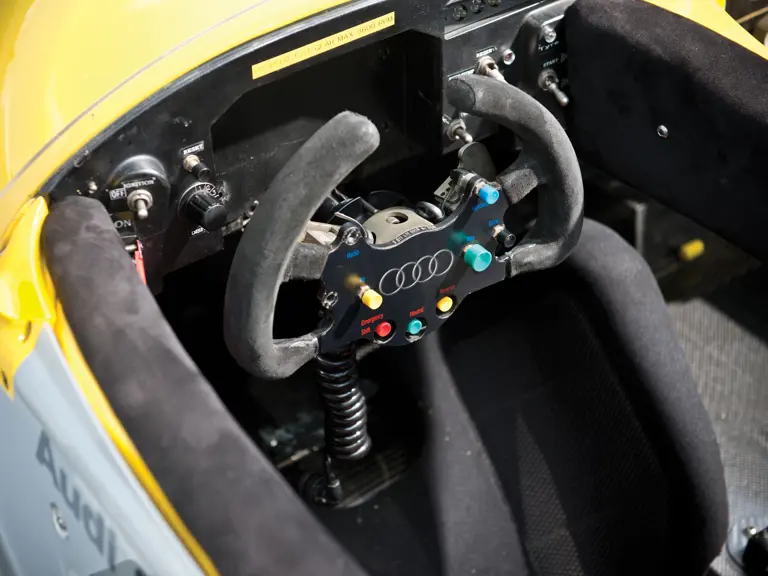

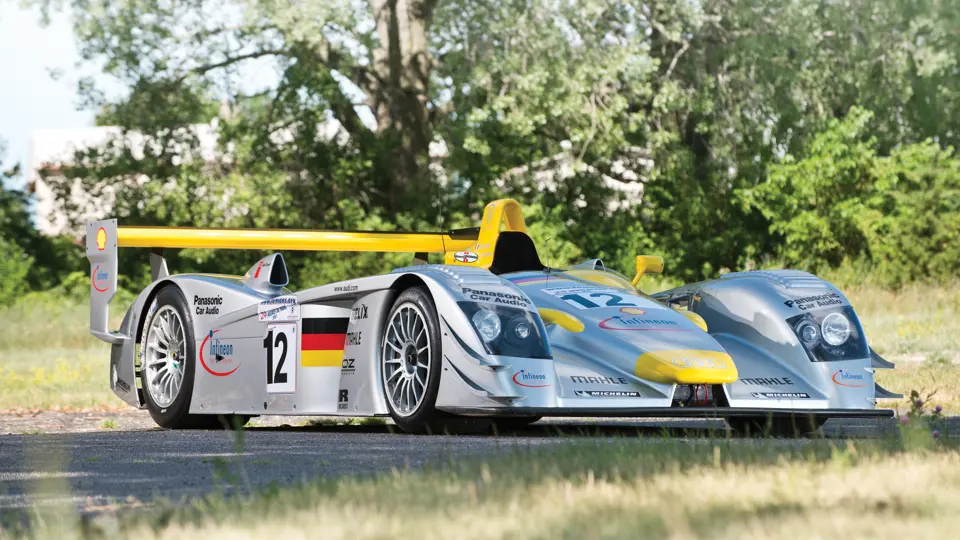
 | Monterey, California
| Monterey, California


